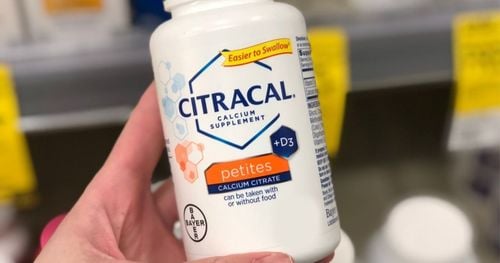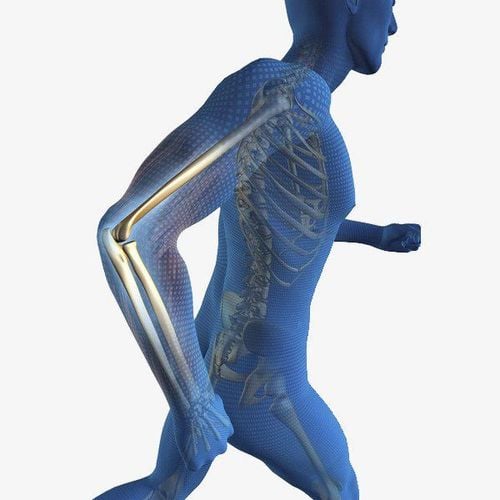This is an automatically translated article.
The bone turnover marker test is currently a commonly used method in the diagnosis and treatment of osteoporosis.
1. What is a bone turnover marker test?
Bone is continuously metabolized through stages: bone destruction by osteoclasts and bone formation by osteoblasts.
A common bone problem is osteoporosis (osteoporosis). Osteoporosis is a metabolic bone disorder associated with increased bone resorption and decreased bone formation. As a result, the bones are thin and weak, which can easily lead to fractures. Risk factors for osteoporosis include: Poor physical development at an early age, family history of osteoporosis, physical inactivity, habit of using alcohol, tobacco, or certain medical conditions. (deficiency of male and female gonads, endocrine diseases, bone and joint diseases, chronic kidney disease,...), long-term use of certain drugs (anti-epileptic, anti-diabetic, anti-inflammatory corticosteroids) . Early diagnosis of osteoporosis will help early intervention and treatment, preventing the risk of fracture.
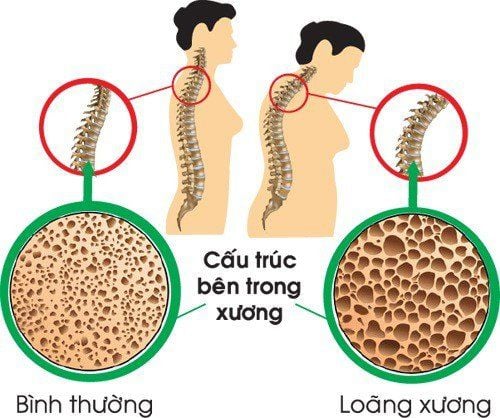
Tình trạng loãng xương
Bone densitometry has been widely used to identify osteoporosis. However, this method has the limitation that it cannot help doctors detect small changes in bone metabolism, or it can be monitored but it takes many years. At the same time, the cost of bone density measurement is quite high, so it is not done regularly. Meanwhile, by monitoring bone turnover markers, doctors can identify changes in osteoporosis treatment for a few months after treatment.
Markers of bone turnover have been shown to accurately predict early improvement in bone density and treat fractures. In addition, these markers also contribute in determining whether the treatment is appropriate for the patient. However, the amount of markers in bone turnover varies with time of day and bone mass, so this test is not really useful in screening for osteoporosis. The bone turnover tracer test is mainly used to determine the effect of treatment compared with pre-treatment.
2. Trackers in bone turnover
N-telopeptides and C-telopeptides (NTx and CTx) present in collagen type 1 make up nearly 90% of the bone matrix. When bone is destroyed, NTx and CTx are released into the bloodstream and excreted in the urine. NTx and CTx tests show early response to treatment when antiretroviral drugs are used; The amino-terminal procollagen type 1 procollagen (P1NP) is proportional to the amount of new collagen produced by osteoblasts. P1NP levels are increased in patients with various bone diseases. The P1NP test is useful in monitoring bone-forming therapies and anti-bone resorption therapies;
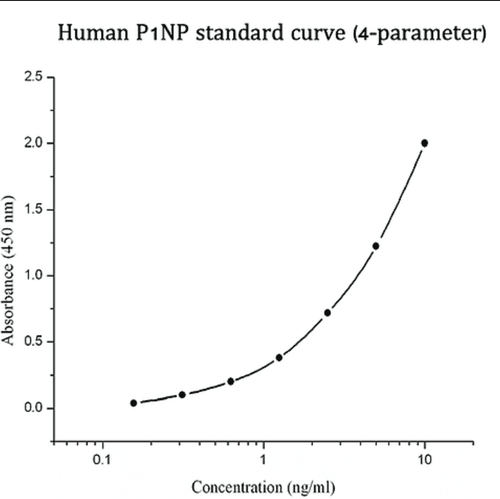
Nồng độ P1NP tăng
Pyridinium (PYD) cross-linked: Formed by the maturation of collagen type 1 during bone formation. In cases of bone resorption, cross-linked PYD is released freely; Osteocalcin (or Bone G1A Protein - BGP) produced by osteoblasts, involved in bone formation and bone resorption, is a good indicator of bone metabolism. Increased osteocalcin levels are associated with loss of bone mineral density. This is a vitamin K dependent protein, so a decrease in vitamin K will reduce BGP. This helps explain vitamin K deficiency osteoporosis; Bone-specific alkaline phosphatase (BSAP): Found in the cell membranes of osteoblasts, is an indicator of the metabolic status of osteoblasts and bone formation.
3. When is a bone turnover marker test needed?
Performed in parallel with other tests such as: Measure blood calcium levels, measure vitamin D levels, check thyroid function and parathyroid hormone; Performed when the doctor detects that the patient's bones are gradually thinning by bone density tests; Performed when the patient has a fracture that is not caused by a fall or collision; Do it again 3 - 6 months after osteoporosis treatment to check if the treatments are working.

Xét nghiệm được thực hiện trên bệnh nhân bị gãy xương
4. Perform a tracer test in bone turnover
4.1 Preparation The patient talks to the doctor about the purpose of the test, the procedure to be performed; Fasting for 8 hours before the test; Some hospitals require a 24-hour urine test. 4.2 Procedure for performing Urine test
Collect a urine sample by discarding the first urine sample, take a second sample to ensure accuracy by:
Collect the first urine sample about 30-40 minutes before the scheduled time. laboratory space requesting sample collection; Discard the first urine sample; Drink a glass of water; Take a second urine sample.
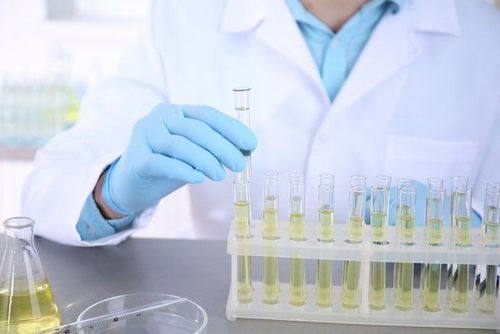
Xét nghiệm bằng mẫu nước tiểu
Blood test
Medical staff wrap a bandage around the arm to stop the blood circulation, locate the blood collection site; Disinfect the blood collection site with alcohol; Inject a needle into a vein, attached to a tube to let blood out; Remove the bandage around the arm after sufficient blood is drawn; Press the gauze pad over the injection site; Place a bandage on the injection site. Then, a urine or blood sample will be taken for testing and returned to the patient.
5. Read the results of the tracer test in bone turnover
5.1 Normal results Normal results vary with age:
N-telopeptide number
Urine (nm BCE */mm creatinine): Male: 21-83; Female, perimenopausal: 17-94; Female, postmenopausal: 26-124. Serum (nm BCE *): Male: 5.4-24.2; Female: 6.2-190. C-telopeptide index
Urine (ng/ml): Adults: 1.03 ± 0.41; Children: 8.00 ± 3.37. Serum (pg/ml): Male: 60-700; Female, perimenopausal : 40-465; Female, postmenopausal: 104-1008.
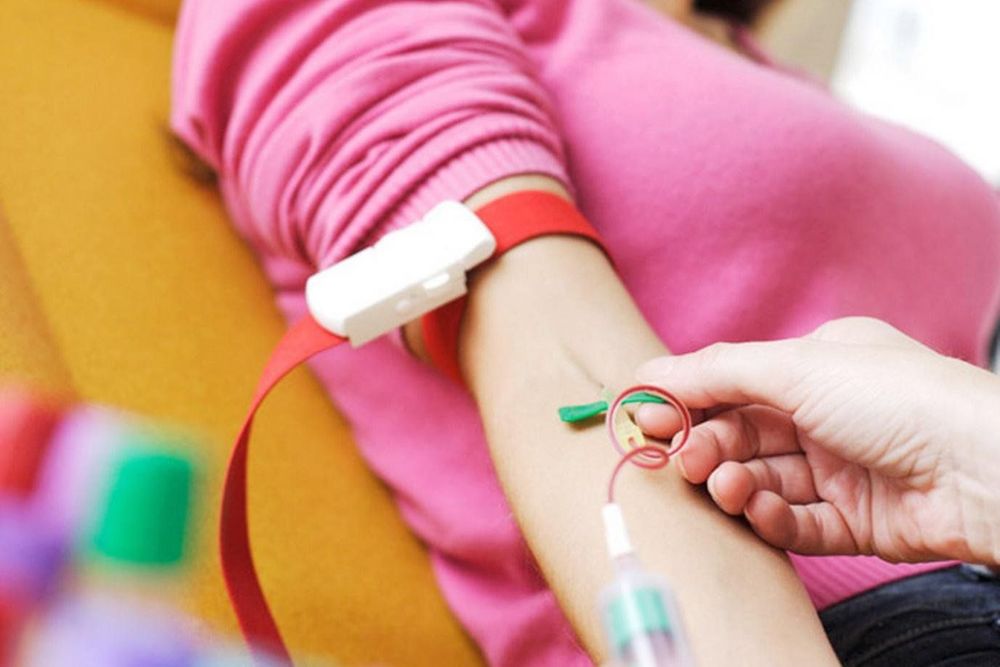
Một số trường hợp có thể dùng máu làm mẫu xét nghiệm
Propeptide procollagen type 1 ending in amino
Serum (lig/L) Male: 22-105; Female, perimenopausal: 19-101; Female, post-menopausal: 16-96. Osteocalcin index
Serum (ng/ml) in adults (> 22 years old): Male: 5.8-14.0; Female: 3.1-14.4. Pyridium Index
Urine (nm/mm): Male: 10.3-33.6; Female: 15.3-33.6. Bone-specific alkaline Phosphatase index
Serum (mg/l): Male: 6.5-20.1; Female, perimenopausal: 4.5-16.9; Female, post-menopausal: 7.0-22.4.
5.2 Abnormal results Bone turnover markers increase in concentration when: Osteoporosis, bone tumor, Paget's disease of bone, hyperparathyroidism, hyperthyroidism, acromegaly. The levels of markers in bone turnover decrease when: Hypothyroidism, hypoparathyroidism, treatment with cortisol or treatment. *Note on test results
A person's urine bone turnover tracer test can vary by up to 30% even if testing is done in one day. Eliminating the first urine and collecting the second urine in the morning when the urine sample is collected may reduce the possibility of erroneous results; Taking medications (such as testosterone) can lower NTx levels.
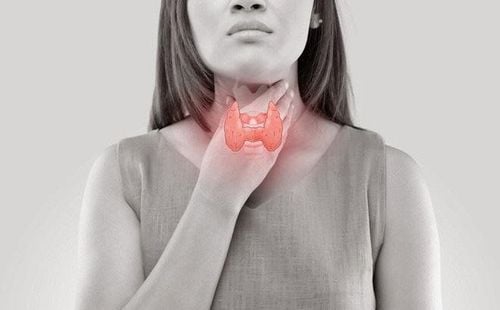
Bệnh suy tuyến giáp có thể làm nồng độ các chất luân chuyển xương giảm
The bone turnover tracer test is commonly used to monitor the treatment of bone diseases. When performing the test, the patient must strictly follow the instructions of the doctor.
Patients with osteoporosis can go to Vinmec International General Hospital for examination and treatment. There is a team of musculoskeletal specialists who are well-trained, experienced and professional; system of modern equipment, meeting international standards; Professional service quality, high efficiency in diagnosis and treatment.
For detailed advice on osteoporosis, please come directly to Vinmec health system or register online HERE.
Recommended video:
Periodic health check at Vinmec: Protect yourself before it's too late!
MORE:
What should people with osteoporosis eat? Methods of measuring bone density to detect the risk of osteoporosis What is a bone density test? Who should have a bone density test?





